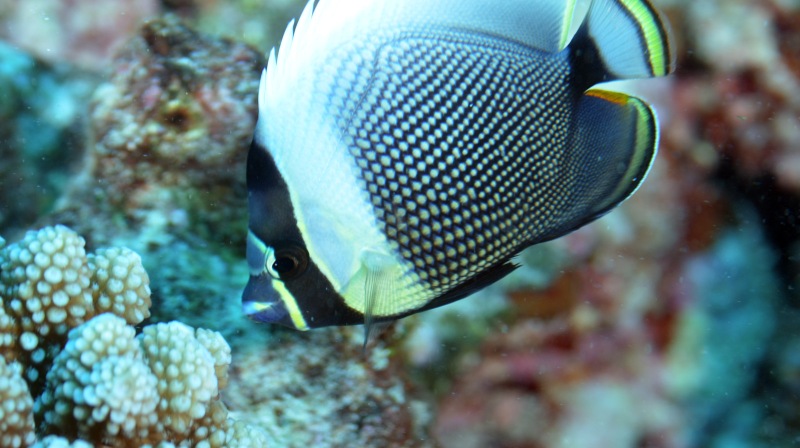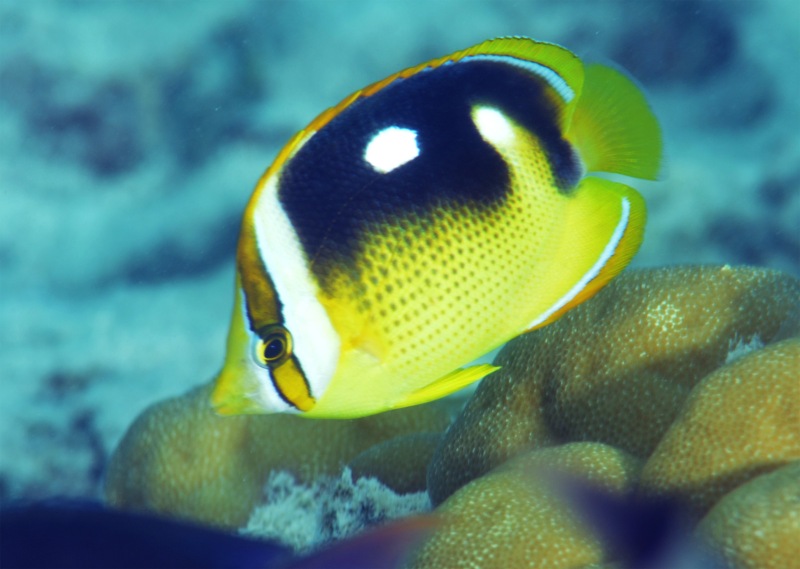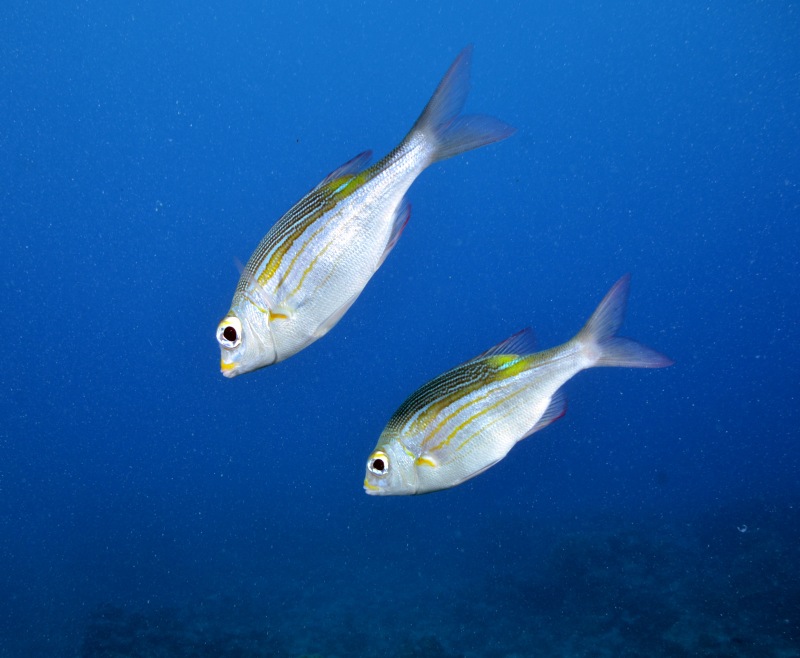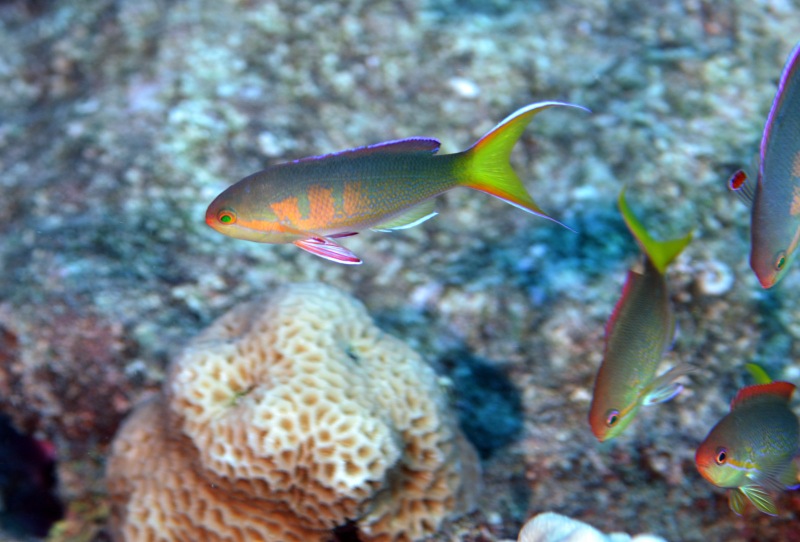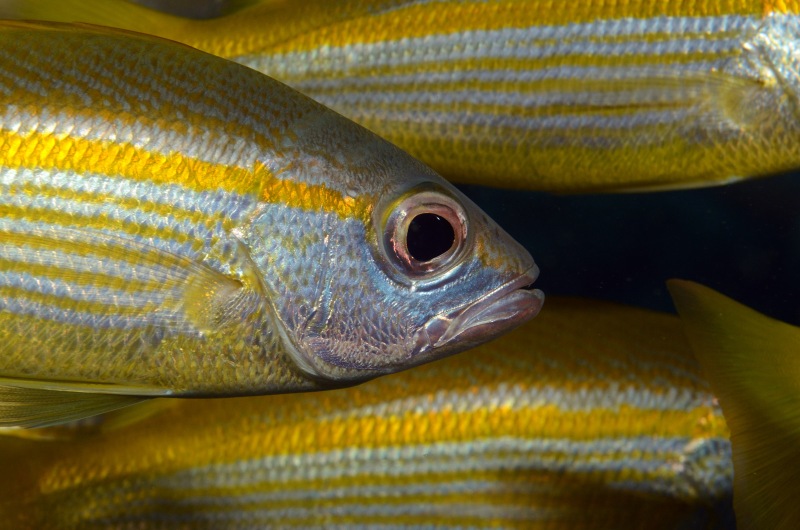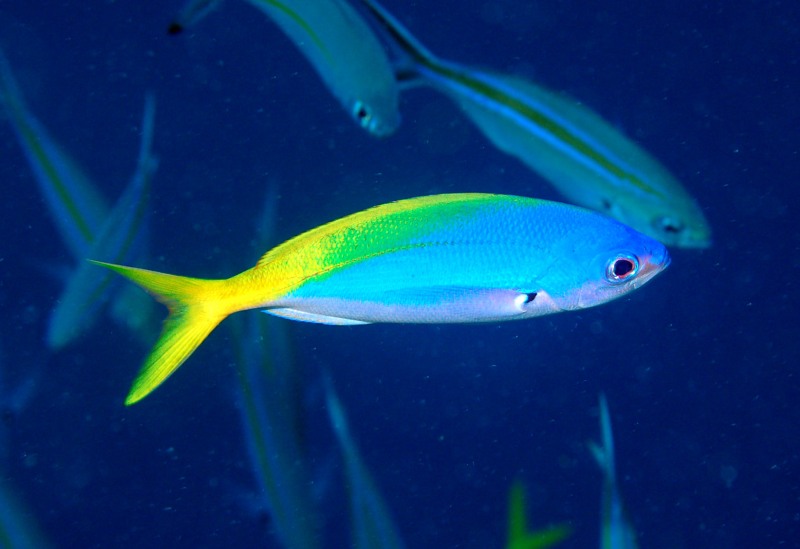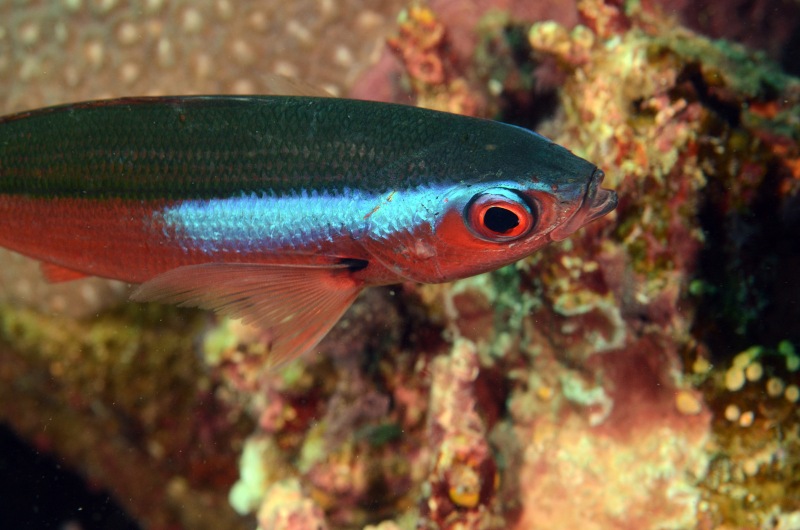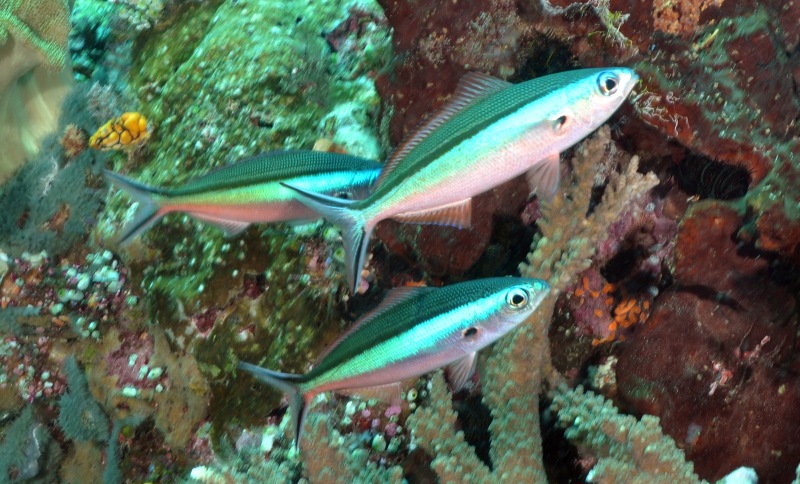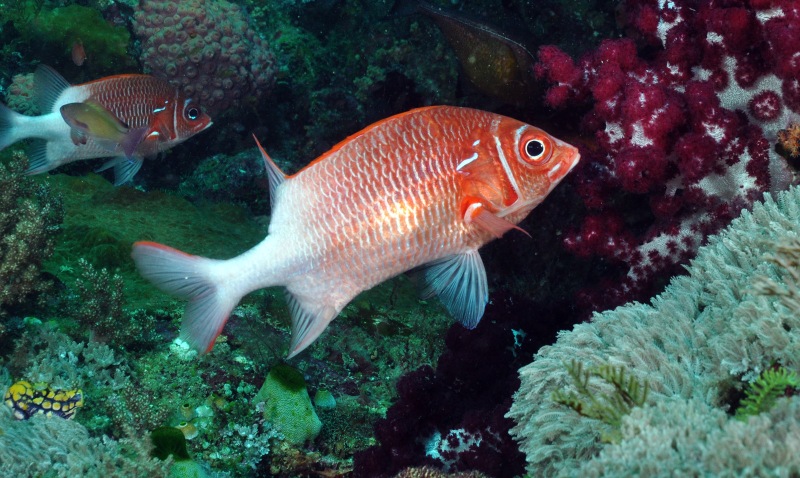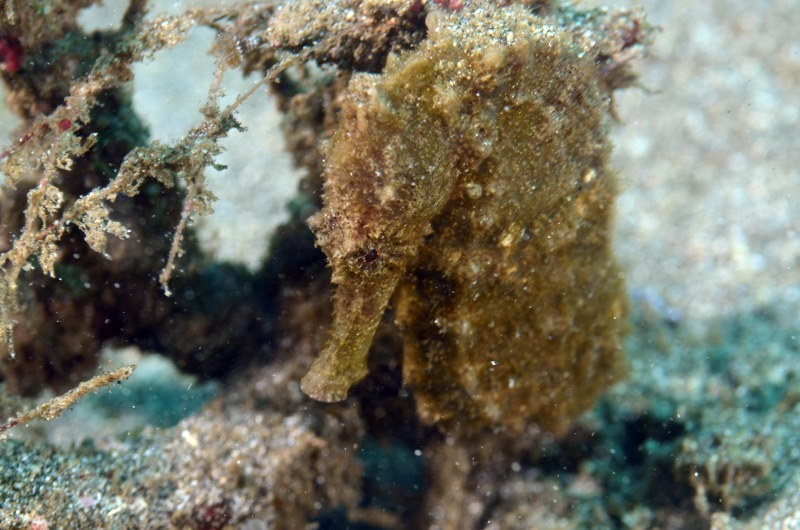
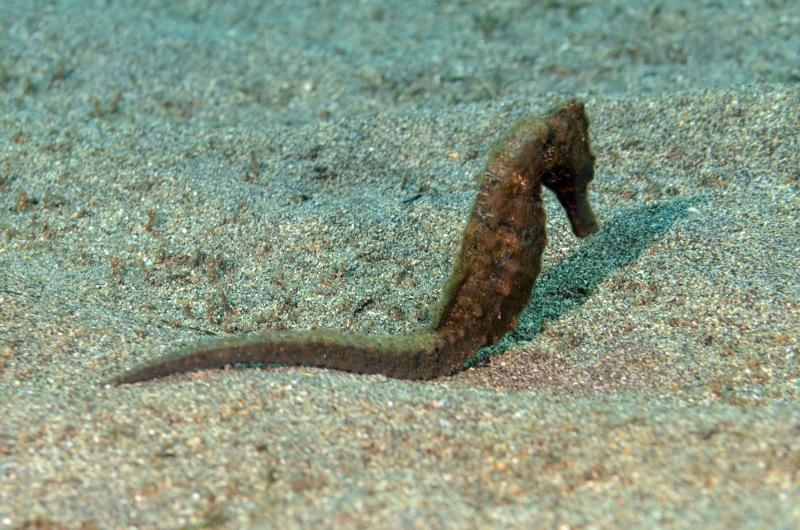
Female Common Seahorses are usually yellow with a few large dark spots. Males are grey to brown with striations on the head and fine dark spots on the trunk. The Common Seahorse is listed in many references as H. kuda. Hippocampus kuda, also known as the common seahorse, estuary seahorse, or yellow seahorse is a member of the family Syngnathidae (seahorses and pipefishes) of the order Syngnathiformes. The common sea horse is a small, equine-like fish, with extraordinary breeding methods.[3] Greeks and Romans believed the seahorse was an attribute of the sea god Poseidon/Neptune, and the seahorse was considered a symbol of strength and power. Europeans believed that the seahorse carried the souls of deceased sailors to the underworld – giving them safe passage and protection until they met their soul’s destination. The common seahorse is considered a vulnerable species.
The common seahorse can be found in a variety of habitats in the shallow coastal waters of the Indo-Pacific, including coral reefs, muddy slopes, and shallow estuaries.The common seahorse has been observed to use its prehensile tail to anchor itself to coral branches or floating sargassum in the wild.
 Pictures: Sulawesi, Indonesia by Sami Salmenkivi
Pictures: Sulawesi, Indonesia by Sami Salmenkivi
